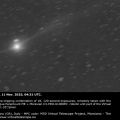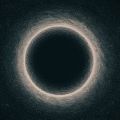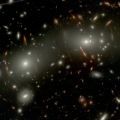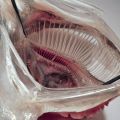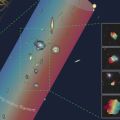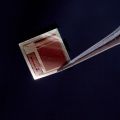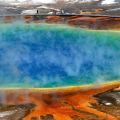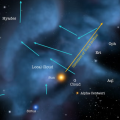Liste des maladies et troubles oculaires - Définition
Source: Wikipédia sous licence CC-BY-SA 3.0.
La liste des auteurs de cet article est disponible ici.
La liste des auteurs de cet article est disponible ici.
Introduction
Liste des maladies et troubles oculaires.
L'organisation mondiale de la santé a publié une classification des maladies connues appelée ICD-10. La liste suit cette classification.
H00-H59 Diseases of the eye and adnexa
H00-H06 Troubles de la paupière, du système lacrymal, et de l'orbite
- (H00.0) Orgelet ("stye" or "sty") — infection bactérienne des glandes sébacées au niveau des cils
- (H00.1) Chalazion — inflammation et l'enkystement d'une ou plusieurs glandes de Meibomius au niveau de la paupière (généralement au niveau de la paupière supérieure)
- (H01.0) Blépharite — inflammation de la paupiére et des cils; caractérisée par des écailles cutanées blanches près des cils
- (H02.0) Entropion and trichiasis
- (H02.1) Ectropion
- (H02.2) Lagophthalmos
- (H02.3) Blepharochalasis
- (H02.4) Ptosis
- (H02.6) Xanthelasma of eyelid
- (H03.0*) Parasitic infestation of eyelid in diseases classified elsewhere
- Dermatose de la paupière due au genre Demodex ( B88.0+ )
- Infestation parasitaire de la paupière dans les cas de:
- leishmaniose ( B55.-+ )
- loase ( B74.3+ )
- onchocercose ( B73+ )
- phtiriase ( B85.3+ )
- (H03.1*) Involvement of eyelid in other infectious diseases classified elsewhere
- Involvement of eyelid in:
- herpesviral (herpes simplex) infection ( B00.5+ )
- lèpre ( A30.-+ )
- molluscum contagiosum ( B08.1+ )
- tuberculose ( A18.4+ )
- pian (médecine) ( A66.-+ )
- zoster ( B02.3+ )
- Involvement of eyelid in:
- (H03.8*) Involvement of eyelid in other diseases classified elsewhere
- Involvement of eyelid in impetigo ( L01.0+ )
- (H04.0) Dacryoadenitis
- (H04.2) Epiphora
- (H06.2*) Dysthyroid exophthalmos
H10-H13 Disorders of conjunctiva
- (H10) Conjonctivite — inflammation de la conjonctive
- (H11.0) Pterygium — benign growth of the conjunctiva
- (H11.3) Subconjunctival hemorrhage — burst blood vessels on conjunctiva
- (H13.1*) Conjunctivitis in infectious and parasitic diseases classified elsewhere
- Conjonctivite (due à):
- Acanthamoeba (B60.1+ )
- adenoviral follicular (acute) ( B30.1+ )
- chlamydial ( A74.0+ )
- diphtheritic ( A36.8+ )
- gonococcal ( A54.3+ )
- haemorrhagic (acute)(epidemic) ( B30.3+ )
- herpesviral [herpes simplex] ( B00.5+ )
- meningococcal ( A39.8+ )
- Newcastle ( B30.8+ )
- zoster ( B02.3+ )
- Conjonctivite (due à):
H15-H22 Disorders of sclera, cornea, iris and ciliary body
- (H15.0) Scleritis — une inflammation douloureuse de la sclère
- (H16) Kératite — inflammation de la cornéeloss
- (H16.0) ulcère cornéen / Corneal abrasion — perte de surface de la couche épithéliale de la cornée
- (H16.1) cécité des neiges / Arc eye — condition douloureuse causée par l'exposition d'yeux non protégés à une lumière trop intense (réverbération des rayons du soleil sur la neige par exemple, d'où le nom)
- (H16.1) Thygeson's superficial punctate keratopathy
- (H18.5) Fuchs' dystrophy — cloudy morning vision
- (H18.6) Keratoconus — the cornea thins and changes shape to be more like a cone than a parabola
- (H19.3) Keratoconjunctivitis sicca — dry eyes
- (H20.0) Iritis — inflammation de l'iris
- (H20.0, H44.1) Uveitis — inflammatory process involving the interior of the eye
H25-H28 Disorders of lens
- (H25-H26) Cataracte — le cristallin devient opaque
H30-H36 Disorders of choroid and retina
- (H33) Décollement rétinien — la rétine se détache de la choroïde, provoquant une vision trouble et déformée
- (H33.1) Retinoschisis — the retina separates into several layers and may detach
- (H35.0) Hypertensive retinopathy — burst blood vessels, due to long-term high blood pressure
- (H35.0/E10-E14) Diabetic retinopathy damage to the retina caused by complications of diabetes mellitus, which could eventually lead to blindness
- (H35.0-H35.2) Retinopathy — general term referring to non-inflammatory damage to the retina
- (H35.1) Retinopathy of prematurity — scarring and retinal detachment in premature babies
- (H35.3) Age-related macular degeneration — the photosensitive cells in the macula malfunction and over time cease to work
- (H35.3) Macular degeneration — loss of central vision, due to macular degeneration
- (H35.5) Retinitis pigmentosa — genetic disorder; tunnel vision preceded by night-blindness
- (H35.81) Macular edema — distorted central vision, due to a swollen macula
H40-H42 Glaucome
- (H40-H42) Glaucome — optic neuropathy
H43-H45 Disorders of vitreous body and globe
- (H43.9) Floaters — shadow-like shapes which appear singly or together with several others in the field of vision
H46-H48 Disorders of optic nerve and visual pathways
- (H47.2) Leber's hereditary optic neuropathy — genetic disorder; loss of central vision
H49-H52 Disorders of ocular muscles, binocular movement, accommodation and refraction
- (H49-H50) Strabismus (Crossed eye/Wandering eye/Walleye) — the eyes do not point in the same direction
- (H49.3-4) Ophthalmoparesis — the partial or total paralysis of the eye muscles
- (H49.4) Progressive external ophthalmoplegia — weakness of the external eye muscles
- (H50.0, H50.3) Esotropia — the tendency for eyes to become cross-eyed
- (H50.1, H50.3) Exotropia — the tendency for eyes to look outward
- H52 Disorders of refraction and accommodation
- (H52.0) Hyperopia (Farsightedness) — the inability to focus on near objects (and in extreme cases, any objects)
- (H52.1) Myopia (Nearsightedness) — distant objects appear blurred
- (H52.2) Astigmatism — the cornea or the lens of the eye is not perfectly spherical, resulting in different focal points in different planes
- (H52.3) Anisometropia — the lenses of the two eyes have different focal lengths
- (H52.4) Presbyopia — a condition that occurs with growing age and results in the inability to focus on close objects
- (H52.5) Disorders of accommodation
- Internal ophthalmoplegia
H53-H54 Visual disturbances and blindness
- (H53.0) Amblyopie (lazy eye) — poor or blurry vision due to either no transmission or poor transmission of the visual image to the brain
- (H53.0) Leber's congenital amaurosis — genetic disorder; appears at birth, characterised by sluggish or no pupillary responses
- (H53.1, H53.4) Scotome (tache aveugle dans le champ visuel) — an area impairment of vision surrounded by a field of relatively well-preserved vision
- (H53.5) Daltonisme — the inability to perceive différences between some or all colors that other people can distinguish
- (H53.5) Achromatopsie — a low cone count or lack of function in cone cells
- (H53.6) Nyctalopie (Nightblindness) — a condition making it difficult or impossible to see in the dark
- (H54) Cécité — the brain does not receive optical information, through various causes
- (H54/B73) Cécité des rivières — blindness caused by long-term infection by a parasetic worm (rare in western societies)
H55-H59 Other disorders of eye and adnexa
- (H57.9) Red eye — conjunctiva appears red typically due to illness or injury
- (H58.0) Argyll Robertson pupil — small, unequal, irregularly shaped pupils






